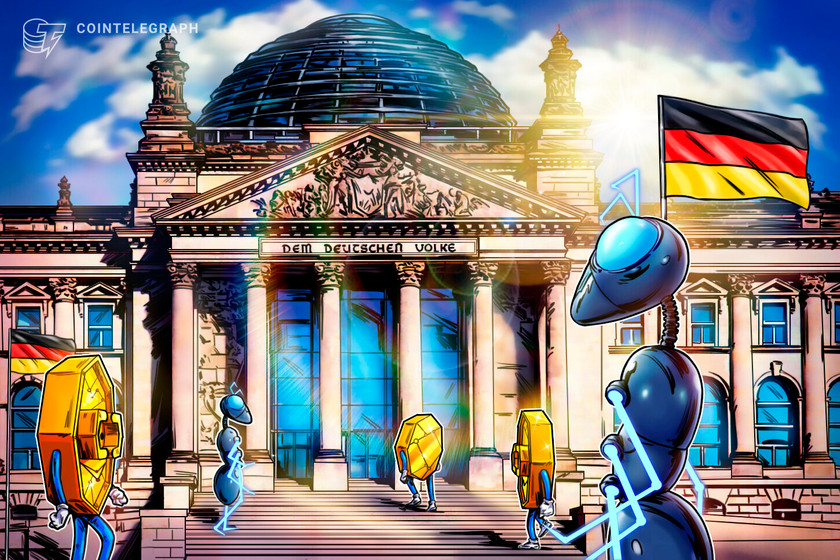The evolution of DeFi and its unique token distribution mechanics
As in most technical domains, evolution in the crypto industry moves in waves. The first wave was the building of layer-one blockchain solutions and infrastructures like Bitcoin (BTC) and Ether (ETH). The second wave was the ICO boom. As this draws to an end, there have been multiple speculations on what the next wave in crypto will be.
Some predicted that security token offerings and initial exchange offerings would be the next big thing, but this did not come to pass. Others believe in layer-two scaling solutions like Plasma and the Lightning Network, which, lately, have proved to be critical solutions due to high network congestion and Ethereum’s gas fees hitting a new all-time high each day. Those solutions, unfortunately, are still several years away.
On the other hand, we also have layer zero solutions like Cosmos and Polkadot, which fall in pretty much the same category: They are visionary in the sense that they would allow the free flow of liquidity between networks and address congestion issues as well.
And then we have decentralized finance. It emerged at just the right time to fill the gap between the (let’s be honest) overall disappointment from initial coin offerings — with over 80% scams and the majority of the remaining projects failing to provide any substation value — and the purely technical L0 and L2 solutions that are due in a few years.
DeFi offers a unique solution: synthetic products that allow conservative investors to receive interest on their stablecoins and enable traders and crypto optimists to leverage their current positions. The true brilliance of DeFi, however, is the issuance of governance tokens. Those tokens really hit the nail on the head by allowing truly exponential returns on invested capital, while, at the same time, radically democratizing protocol governance and promoting true decentralization. This has enabled DeFi to become the purest form of a decentralized autonomous organization, which we have at the moment.
DeFi originally came in two flavors: collateralized lending/synthetic products (like Compound) and infrastructure to support the former (e.g., oracles, decentralized exchanges, bonding curve contracts and automated market makers like Balancer).
Compound is one of the most well-known names in DeFi. Its lending solution was one of the first (along with MakerDAO, although there are notable differences) to offer governance tokens to its users. Since it started distributing COMP tokens to its lenders and borrowers earlier this June, the platform has exploded, increasing its liquidity sixfold and becoming the largest DeFi application — only recently it was overtaken by Aave and Maker.
Meanwhile, the COMP token increased in value from around $66 in early June to almost $220 in mid-August. Compound distributes 2,890 COMP tokens on a daily basis to all users who either provide liquidity or borrow from the protocol. The exact distribution ratios are determined by the interest in the individual currency pairs. The governance token model has already proved to be beneficial for decentralization, as COMP holders have already had an impact on the protocol policies.
Related: Compound’s COMP token takes DeFi by storm, now has to hold top spot
Then there is Balancer (BAL) where, even though BAL tokens have not yet been minted and distributed, and after some volatility due to price discovery early on, the BAL token increased from around $8 in mid-July to over $34 by the end of August.
What is interesting here is that a governance token was not in the original design of Balancer but rather introduced later, following this trend in digital assets. In any case, it surely paid off. It is worth noting that this is in spite of the fact that the Balancer team even kept a huge proportion of the tokens for themselves.
Those projects have two things in common: They offer solid returns via interest or fees and have the potential for exponential returns via their governance tokens.
For the second step in DeFi’s evolution, we have a different approach — what I would call meta-DeFi solutions. These are projects and protocols that enable game-changing features, such as optimized automated yield farming (like Yearn.finance) or cross-blockchain operability (like Equilibrium), which allows for both tapping into a liquidity pool way larger than just Ethereum, while also solving congestion issues.
Yearn.finance is a case where, even though the developers have stated that the underlying governance token is mostly valueless, its value increased from around $700 to $15,000 in less than a month. It has even been hailed as the fastest DeFi growth story in the brief history of cryptocurrencies.
While the token merely provides its owners with voting rights, the developers behind it have decided to distribute all YFI to the community, keeping none for themselves, and thereby earning the approval of their users who value decentralization.
After all, that is what DeFi is all about. The initial supply of 30,000 YFI was distributed equally into three different pools with differing mechanisms, each targeting a different goal (liquidity, governance and protocol usage). The assets which the protocol is managing experienced some of the most exponential growth to be seen in crypto, from under $10 million in mid-July to nearly $1 billion by the end of August.
Equilibrium has an innovative value proposition, aiming to be the first true cross-platform DeFi solution (deployed on the Polkadot substrate), and thereby accessing much larger liquidity than any other DeFi solution out there. It is bringing DeFi to all the main protocols which do not support it natively but can integrate with Polkadot — Bitcoin, Ether, XRP, Tezos (XTZ), EOS, etc. The protocol follows industry best practices by offering its own governance token for liquidity farming and a full set of DeFi functionalities like stablecoins, derivative products, lending and liquidity pools.
Taking this a step further, the protocol adds additional investor protection with the novel concept of “Bailsman” in its lending layer. It is through its risk assessment algorithm that Equilibrium solves DeFi’s liquidity problem. The algorithm monitors both the liquidity of its individual users’ cross-chain assets in real time and their aggregate value, correcting and maintaining overall solvency as necessary by incentivizing Bailsmen to add liquidity to the system via attractive earning opportunities. It thus solves bad debt proactively and avoids the forced auctions that can be catastrophic in adverse markets, as MakerDAO experienced this spring.
DeFi is here to stay and is evolving rapidly. It is the purest form of a DAO which we have to date. The original projects have pioneered the approach and given us basic collateralized lending and the infrastructure including oracles and AMA, which are at the core of DeFi.
The next step was the central role of governance, tokens and their potential for exponential returns. This is where the limitations of the Ethereum blockchain became very obvious.
The views, thoughts and opinions expressed here are the author’s alone and do not necessarily reflect or represent the views and opinions of Cointelegraph.
Alex Melikhov is the CEO of Equilibrium and has 15 years of entrepreneurial and fintech experience. A fan of DApps, he is a specialist in EOS smart contracts and Ethereum, on which the majority of DeFi applications are hosted. A cryptocurrency enthusiast since 2013, Alex has founded and co-founded several businesses in the sector, including the renowned crypto exchange Changelly, Oxygen trade and EOSDT.









